四季轮种的农田有着变幻的地景,灌溉渠是一条不变的直线。我顺着架在水渠上的小路走进田里,路的端头匍匐着一个黑色的屋顶。在彩色的田野里,黑色的物体是某种抽离。阴影下我停留下来,在台地间歇息。 静默的雕塑消失了,顶棚轻若风筝地被细线系在大地上,微微反射出田间光晕。空间游离地环绕着一个隐秘的核心,那里有滴水的回音。声音在不可见的地下振动,旋即上升而消逝于自然,由此空间更加开展。水泥上嵌入的旧物像某种遗迹,关于乡村生活的记忆。水池轻微泛着涟漪,里面有一只倒扣的老水缸。我看到,稻田深处流动的水,以及被堤坝隔而不见的衢江。
▼项目视频,video© STUDIO FANG
Fields with seasonal crop rotation present a changing landscape, while the irrigation canal remains a constant, straight line. I walked along a narrow path atop the canal, leading into the fields. At the end of the path, a black roof lay nestled against the ground. Amidst the colorful fields, the black object stood apart, an element of detachment. I paused in its shadow, resting between terraces. The silent sculpture vanished, its roof tethered lightly to the earth like a kite, subtly reflecting the field’s glow. The space floated around a hidden core, where the echo of dripping water could be heard. The sound vibrated invisibly underground, rising briefly before merging into nature, allowing the space to expand further. Embedded in the cement were old objects, resembling relics that evoked memories of rural life. The pool’s surface rippled gently, with an old water jar overturned inside. I observed the flowing water deep within the rice fields, echoing the unseen Qujiang River, hidden behind the dike.
▼项目鸟瞰,Ariel view of the project©田方方

听雨停位于浙江衢江畔的田野里。举重若轻的结构体内藏匿了“滴水埋瓮”的古法声音装置,通过声景化的田间场所探索乡村日常性与艺术精神性的融合。
“Listening-to-the-rain Stop” is situated in the fields along the Qujiang River in Zhejiang. The lightweight structure houses an ancient sound device known as “Dripping into buried jar”, which integrates the soundscape of the countryside. This installation explores the fusion of rural everyday life with artistic spirituality through the sonorous landscape of the fields.
▼落日时分的听雨停,Listening-to-the-rain Stop at sunset©swoop建筑工作室
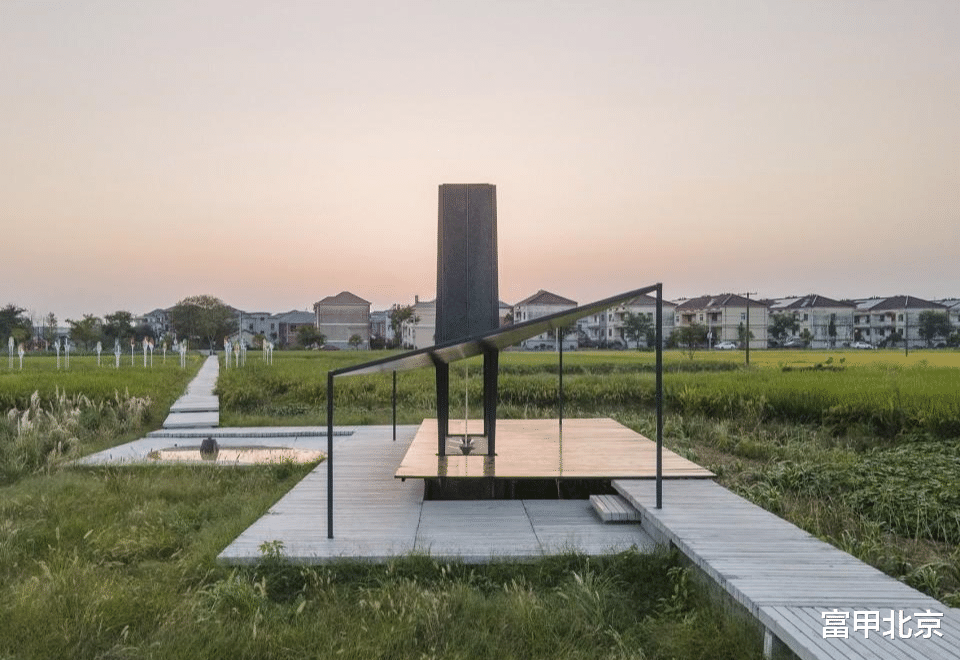
▼南视角,view from the south©田方方
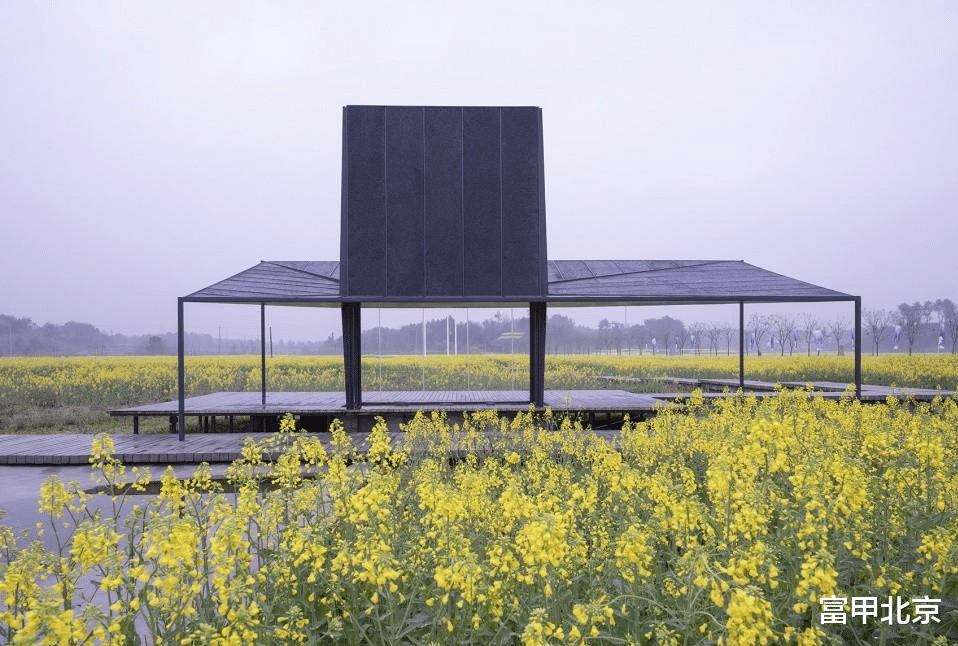
▼北视角,view from the north©STUDIO FANG
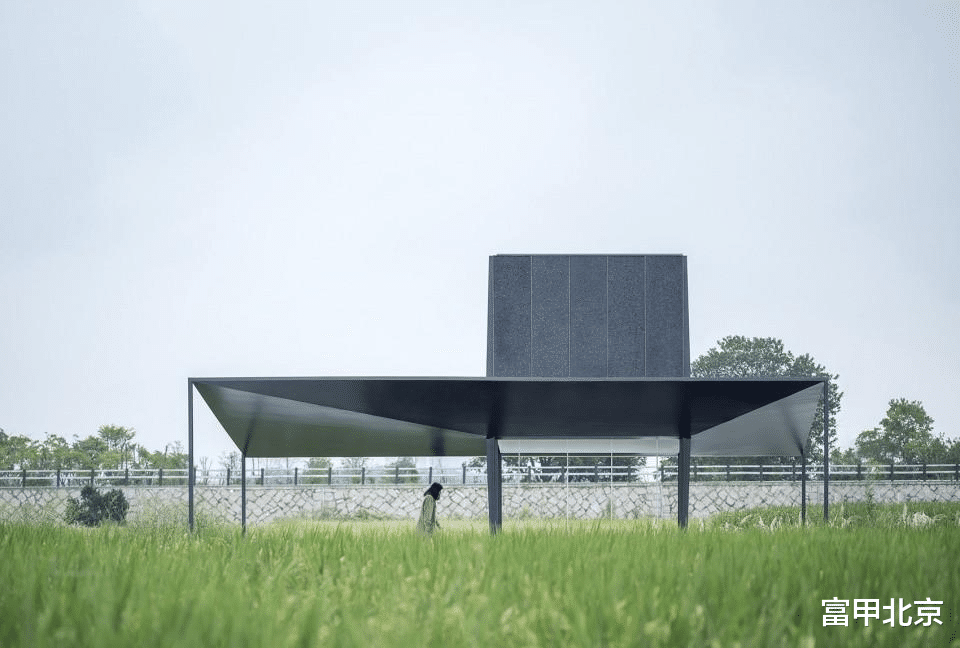
听雨停屋顶的特殊形式,是结构力学的构成基础。结构的轻与重,水平性与垂直性有着相辅相成的关系。整体屋面结构由重复的剖面L形变截面的悬臂钢肋,周匝环绕而成;6毫米厚的钢板从内侧将钢肋箍圈,约束形成整体。四根十字形钢柱构成了核心力学支撑,而垂直钢肋从根部悬挑出水平延展的屋面反肋,钢肋与屋面板组合受力形成更优的空间刚度,由此水平屋面四角仅需5cm的纤细方柱进行辅助支撑。
▼结构计算模型(左)& 横载变形(右),Structural calculation models & Transverse load deformation©和作结构建筑研究所
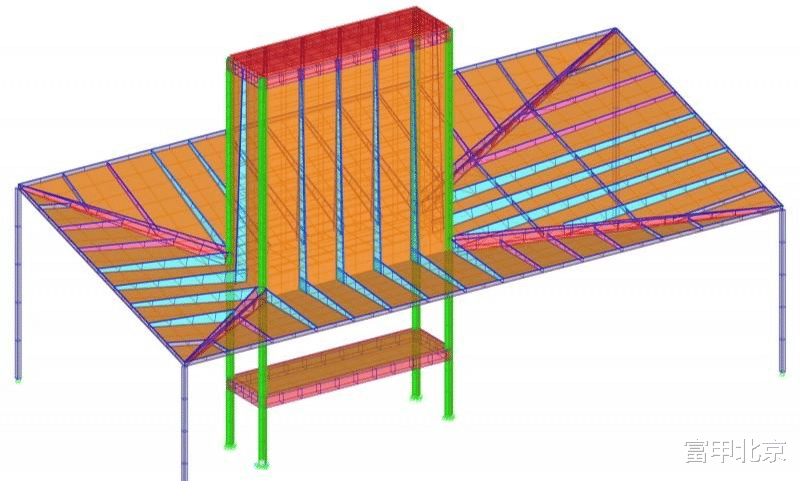
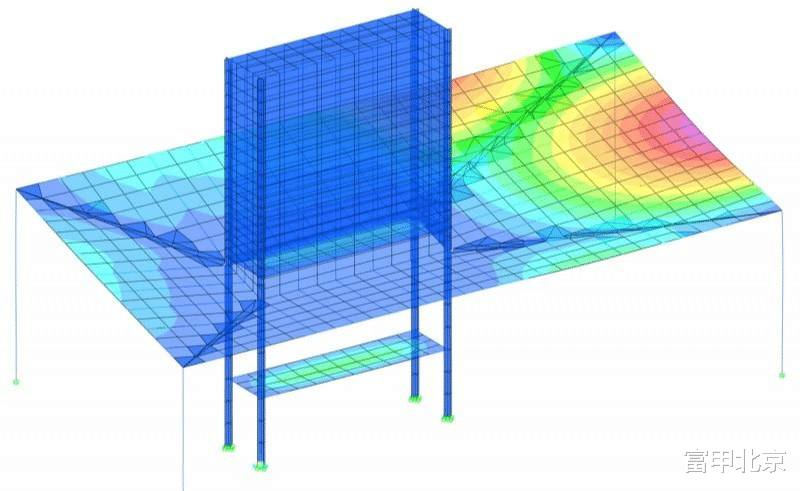
The unique form of the roof of “Listening-to-the-rain Stop” serves as the structural foundation. The interplay between lightness and heaviness, and between horizontality and verticality, is complementary. The overall roof structure is composed of cantilevered steel ribs with repeated L-shaped cross-sections that encircle the perimeter. These ribs are clamped by 6mm thick steel plates from the inside, forming a cohesive whole. Four cruciform steel columns provide the core mechanical support, while the vertical steel ribs extend horizontally from the base, creating counter ribs for the roof. The combination of steel ribs and roof panels enhances spatial rigidity, allowing the horizontally extended roof to be supported by slender 5cm square columns at the four corners.
▼田野里的听雨停下,Listening-to-the-rain Stop in the field©田方方


▼听雨停下,under the eave©STUDIO FANG

▼春雨中的听雨停,Listening-to-the-rain Stop in the rain©杨敏
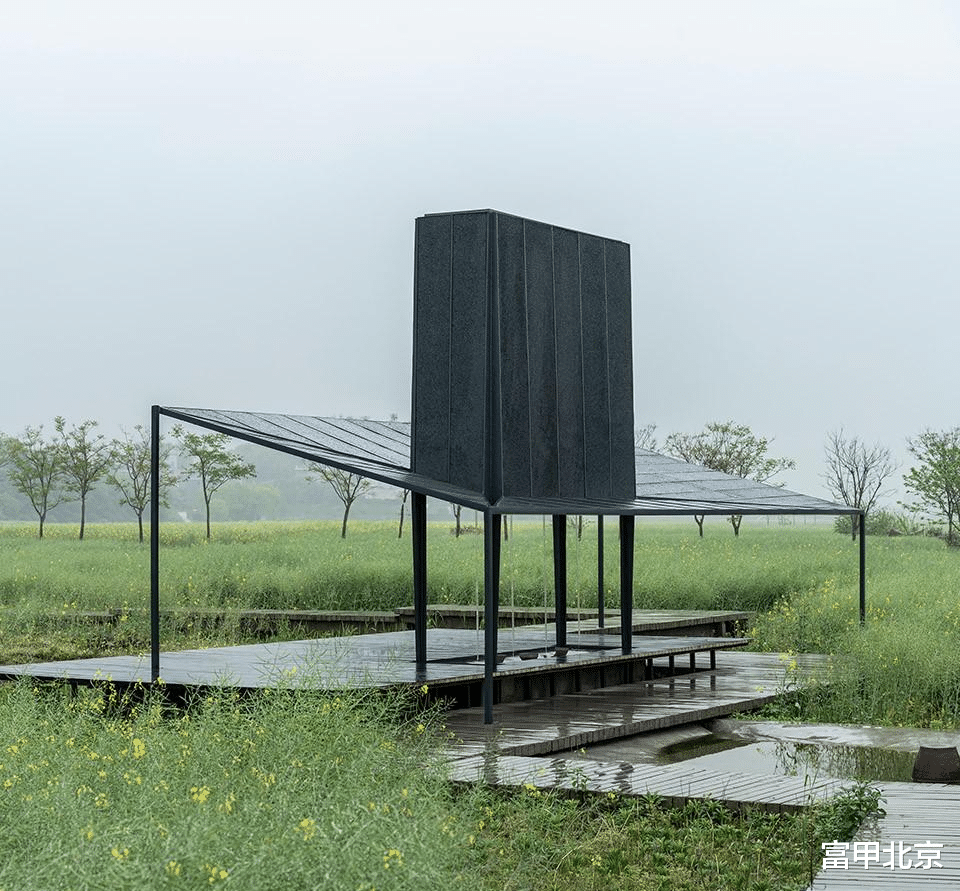
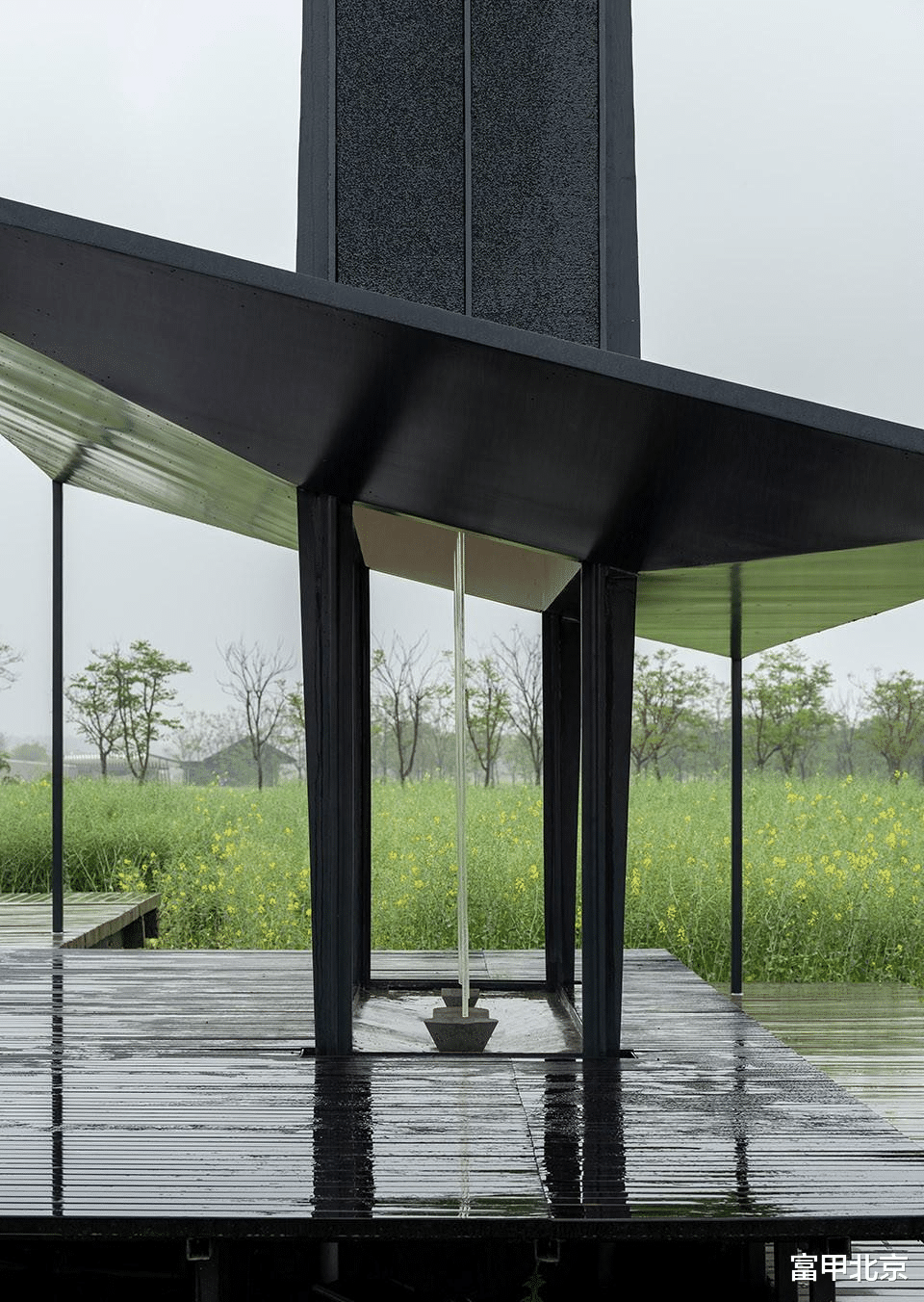
材料的精致与粗糙,建造的预制化与手工化,在此构成参差的对照。黑色半镜面的结构钢板,构成反射农田光色的顶棚覆盖;屋面反肋钢梁间则镶嵌以深色泡沫铝板,轻质而隔热隔音,以当代工业材料创造出粗砺的乡间茅草顶意象。钢结构采用在工厂预制、分板块运输至现场再拼接组装的制作方式,保证精确度与工程效率;而其它元素则采用日常手工化的建造方式。用于制作葡萄架的预制水泥条,铺装成平台栈道;埋瓮基座及水池的弧面由设计师现场放样找形、指导当地工匠制作。
▼分解轴测图,axonometric©swoop建筑工作室

The contrast between refined and rough materials, as well as the prefabrication and handcrafting of construction, creates a dramatic interplay. The black semi-mirrored structural steel plates form a reflective canopy, mirroring the colors of the fields. The spaces between the roof’s counter ribs are filled with dark aluminum foam panels, which are lightweight, insulating, and soundproof, evoking the rustic image of a thatched roof with contemporary industrial materials. The steel structure is prefabricated in a factory, transported to the site in sections, and assembled there, ensuring precision and construction efficiency. Other elements are built using traditional handcrafted methods. Prefabricated concrete strips, typically used for grape trellises, are laid to create platform walkways. The curved surfaces of the buried jar base and the pool are shaped on-site by the designer, who guides local craftsmen in their construction.
▼听雨停下, under the eave©STUDIO FANG
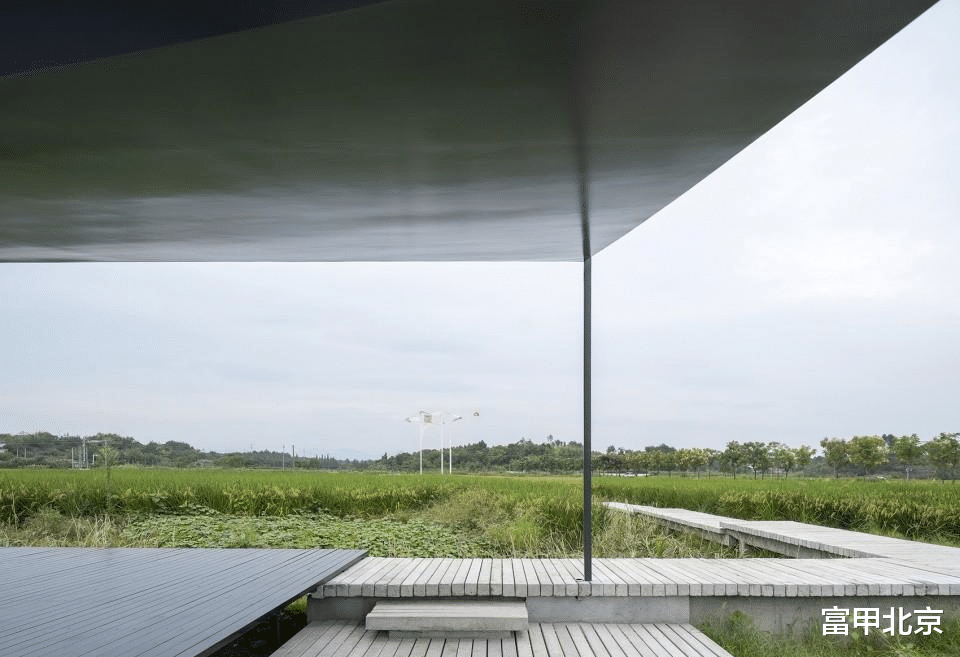
▼从栈道走近,approach from the a plank road©田方方
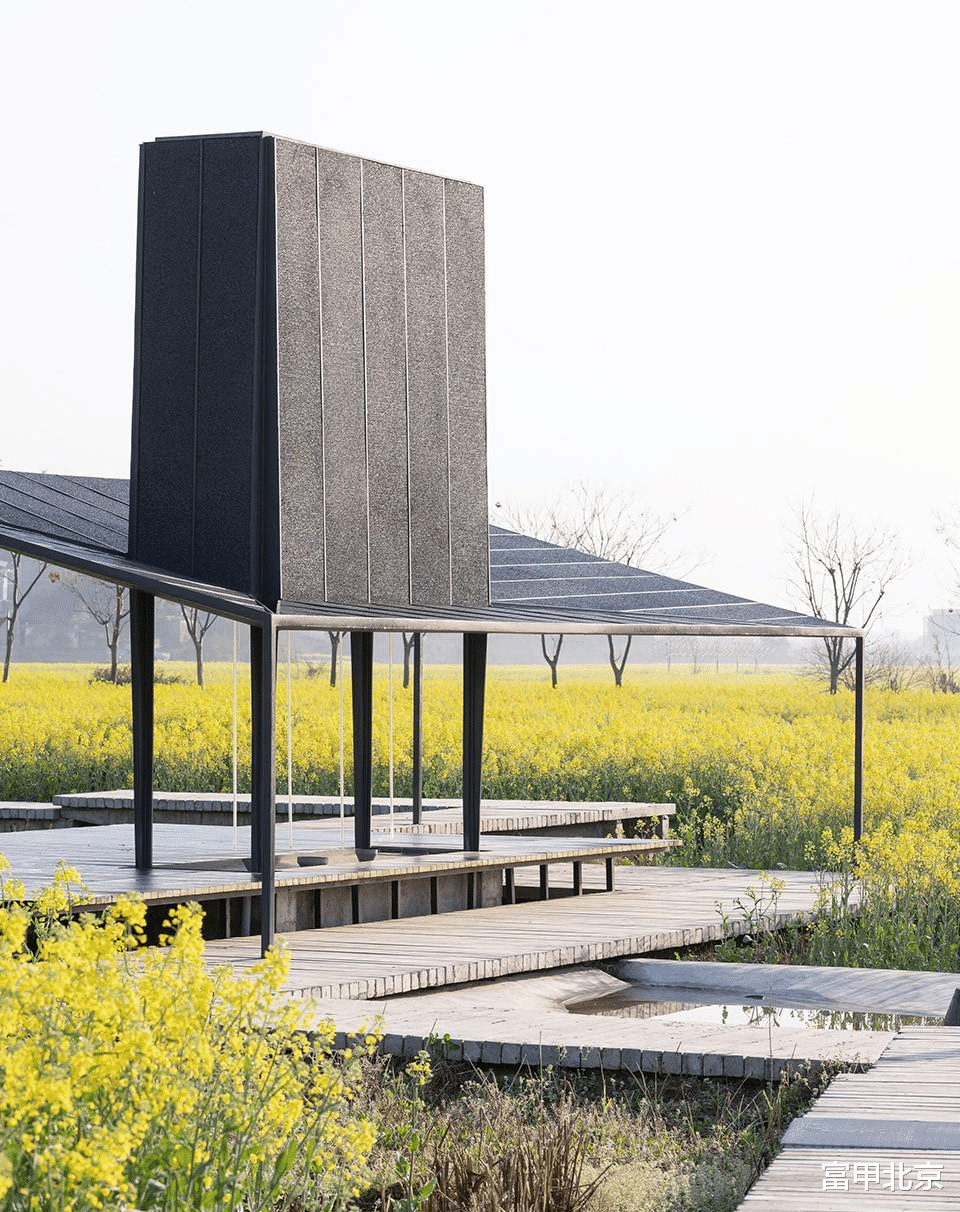
▼听雨停下, under the eave©田方方


“埋瓮滴水”装置被自然地融入整体架构的排水系统。微内倒坡的屋面使得雨水从泡沫铝板孔洞渗下而汇聚到四根屋脊排水沟,再沿着十字柱流下到水泥基座的曲面,汇入三只埋藏的老水缸而排出。在无雨的时节,附近汲取的井水从悬下的四根透明亚克力管缓缓滴下,汇入埋瓮装置后流入水池,最终灌溉回农田。
▼“埋瓮滴水”装置融入排水系统的机制,The “Dripping into buried jar” device©swoop建筑工作室
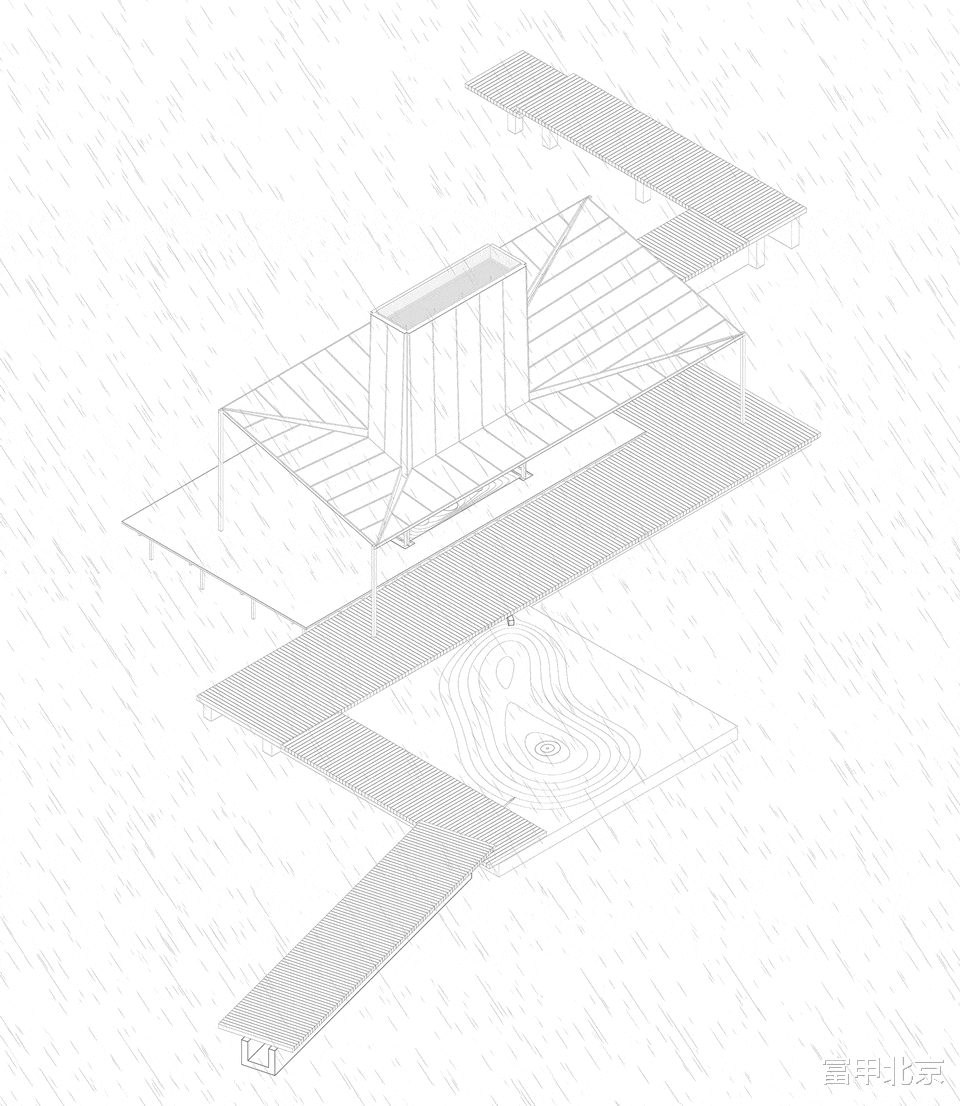
The “Dripping into buried jar” device is seamlessly integrated into the overall drainage system of the structure. The slightly inward-sloping roof allows rainwater to seep through the holes in the aluminum foam panels, collecting in four roof ridge gutters. The water then flows down the cruciform columns to the curved surface of the concrete base, where it is directed into three buried old water jars before being drained out. During dry seasons, water drawn from nearby wells drips slowly through four suspended transparent acrylic tubes, passing through the buried jar device before flowing into the pool and eventually irrigating the fields.
▼三只不同声音性格的老水缸,The three old water jars©swoop建筑工作室

▼埋缸前夜的现场声音调试,sound testing©swoop建筑工作室

三只老水缸形态各异,传统用于江浙一带民间储水;经过反复测音试验而被寻找到各自的物理共振点,从而发挥出最佳的声音性格。埋设水缸的卵石以及固定亚克力水柱的鱼线,皆从衢江边拾得;而每个缸上放置的起扩音作用的“喇叭”,是自当地五金店淘得的压力风帽。
The three old water jars, each with a distinct shape, were traditionally used for water storage in the Jiangsu and Zhejiang regions. After extensive sound testing, each jar was identified for its unique resonant frequency, optimizing their sound characteristics. The pebbles used to bury the jars and the fishing lines securing the acrylic water columns were all collected from the banks of the Qujiang River. The “trumpets” placed on each jar to amplify the sound were repurposed pressure caps sourced from a local hardware store.
▼“埋瓮滴水”声音装置,The “Dripping into buried jar” device©STUDIO FANG


▼融入排水系统的声音装置,integrated into the drainage system©田方方
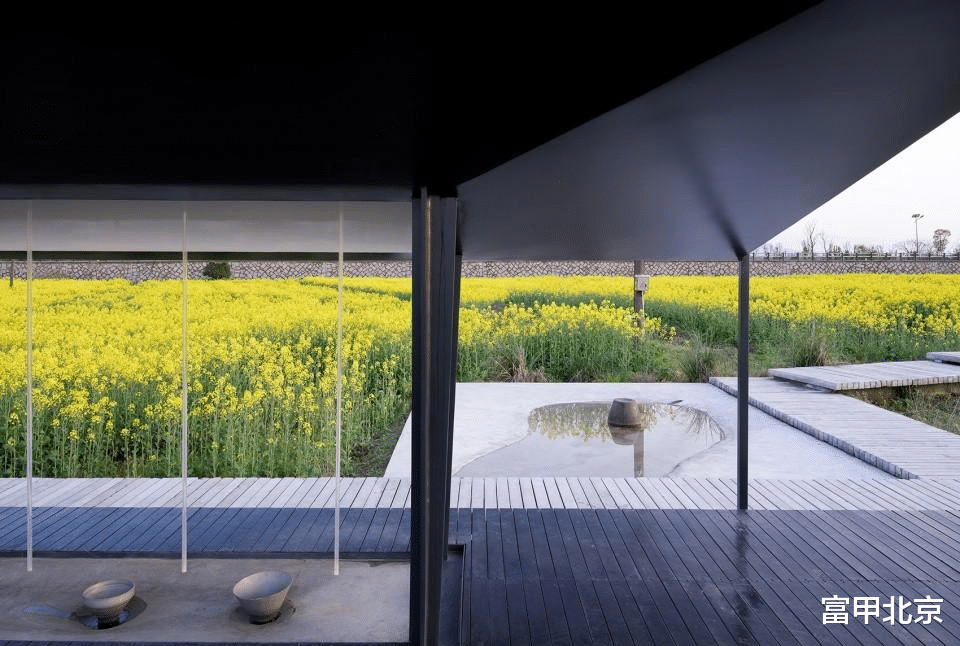
听雨停的设计与建造是一次特殊的经历,物体的集结最终形成了某种化学反应。希望它可以慢慢成为锚固于衢江村畔田野的一处空间场所,以知觉化的经验呈现乡村水土的价值。如里尔克的一首诗所述:
“如若尘世将你遗忘,对沉静的大地说:我流动对迅疾的流水言:我在。”
The design and construction of “Listening-to-the-rain Stop” represent a unique experience where the assembly of objects ultimately creates a kind of chemical reaction. It is hoped that it will gradually become an anchored space along the fields of Qujiang Village, presenting the value of rural land through perceptual experiences. As described in a poem by Rilke:
“And if the world has ceased to hear you,say to the silent earth: I flow.To the rushing water, speak: I am.”
▼田间闲逛与歇息的村民,wandering village residence©田方方
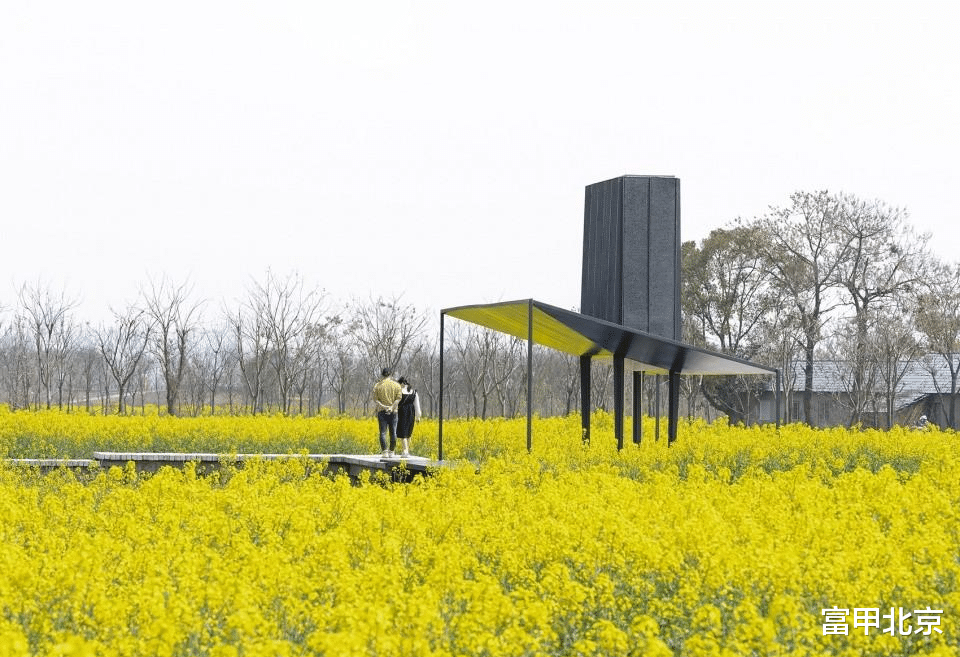

▼田野里的听雨停, Listening-to-the-rain Stop in the field©田方方
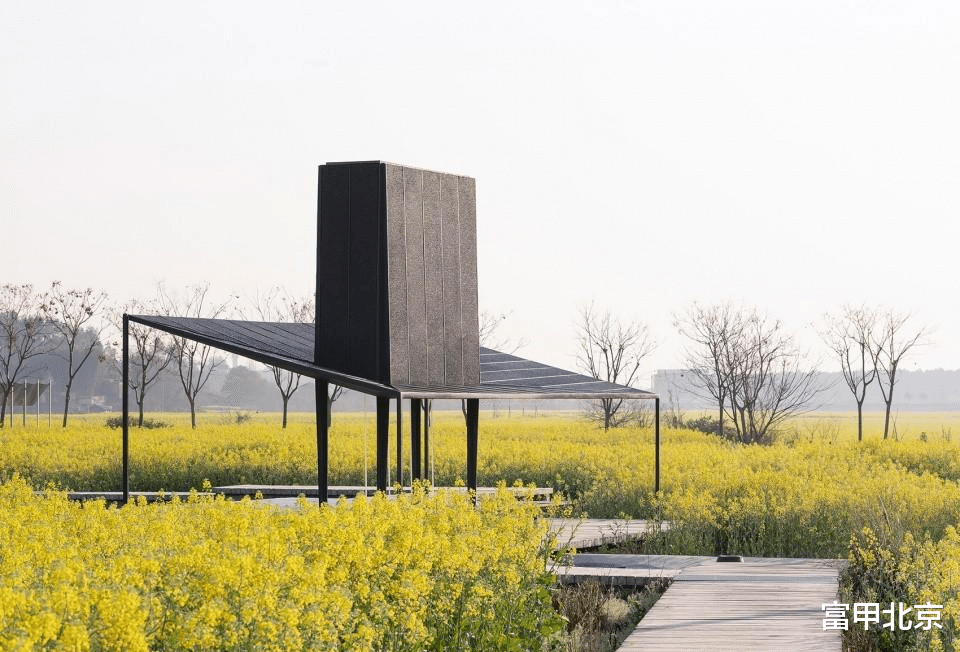

▼田野里的听雨停, Listening-to-the-rain Stop in the field©STUDIO FANG

▼屋顶细部, roof detail©杨敏

▼施工照片, construction photo©张准
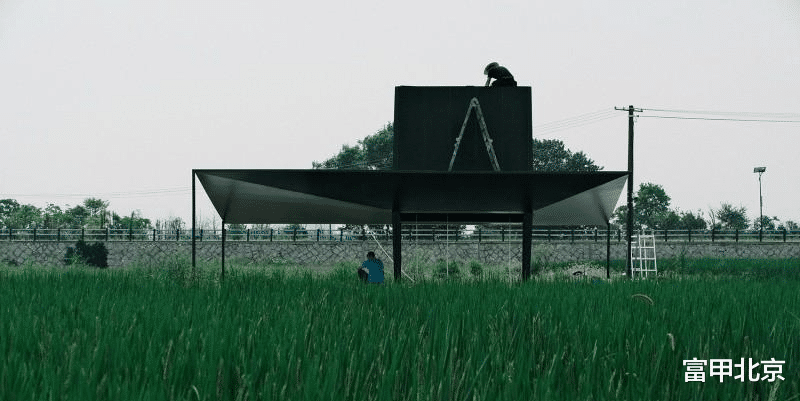
▼工厂预制、现场分板块拼装的施工方式, construction photo©swoop建筑工作室
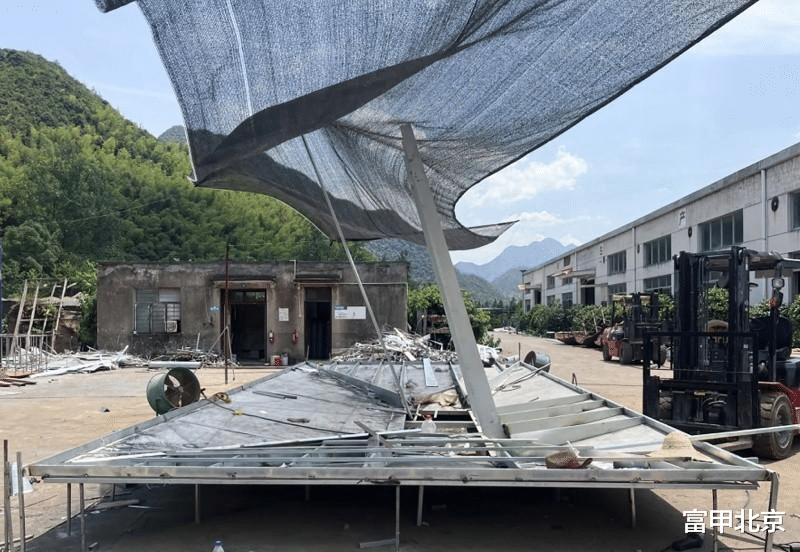
▼总平面图, site plan©swoop建筑工作室

▼平面图, plan©swoop建筑工作室

▼剖面图, section©swoop建筑工作室

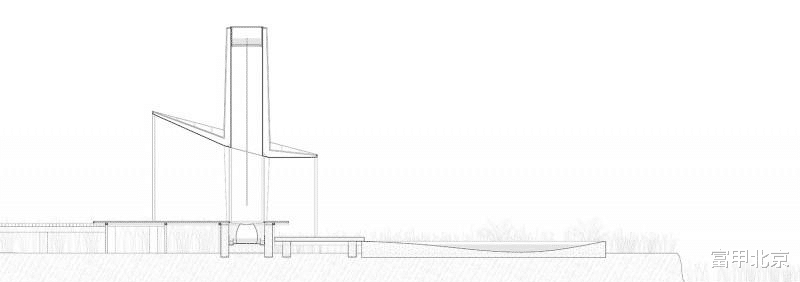
▼对三只老水缸的测音试验, sound testing of the old jar©swoop建筑工作室

